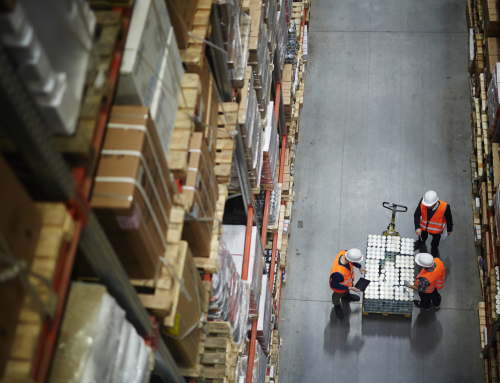Warehouse trends arise from a need in the marketplace. Few are currently more significant than on-demand warehousing.
Innovation does not happen in a vacuum. It’s a response to a need in the marketplace, the result of seeking a solution to a challenge that risks derailing further growth. For me, that need was flexible warehouse space for my five product businesses. Now, the idea of flexible space has grown into a business model and picked up such momentum that it has emerged as one of the most significant trends in warehousing today, alongside developments such as robotics and AI.
To quote an analyst at ABI Research: “The warehouse is becoming the engine room of the supply chain and is, therefore, a focal point for investment from retailers, manufacturers, and logistics service providers.”
Let’s take a look at some key figures that are pushing on-demand warehousing into the forefront of warehouse trends.
Warehouse trends: Why on-demand warehousing is on the rise
452,000 — number of additional warehouse workers needed by 2020
The new CSCMP’s annual State of Logistics report includes a striking fact: warehouses and distribution centers in the United States need nearly half a million additional workers by 2020, at a time when labor is becoming increasingly difficult to find. To combat the shortage, some warehouses are adopting “amenities born in Silicon Valley” as a recent Wall Street Journal article recounts.
Although automation could, in the long term, soften the crunch, on-demand warehousing offers more immediate relief by putting the time-consuming task of finding workers on another party while letting companies focus on their core services.
4% — increase of warehouse rents in 2018
The pace of rent increase slowed somewhat compared to the previous six years, CSCMP reports. But the upward trend is unquestionable, driven by the furious demand for more warehouse space. At 4.3%, the national warehouse vacancy rate is now at the lowest level since at least 2002, according to CBRE, and the positive net absorption continues uninterrupted.
While demand for space remains, so does the reality for cost-conscious businesses: How should they avoid paying premium dollars for warehouse space they may only need for part of the year? That’s when on-demand warehousing now offers a viable alternative in its portfolio of solutions, letting businesses find space where they need it, when they need it.
1 day — Amazon’s new delivery pledge
Amazon’s recent pledge to offer one-day delivery to Prime members slipped during the Prime Day online shopping bonanza. Still, the giant has raised the bar for speedy deliveries, transforming customer expectations and forcing e-commerce companies to adjust to a hyper-competitive environment.
A key feature of being able to serve end customers is proximity. To draw on my own experience again, the locations of our warehouses meant products sometimes had to be shipped cross-country at a steep price. The availability of on-demand warehousing, on the other hand, would have allowed us to keep a smaller amount of inventory closer to our customer base on the West Coast, whether it would be to respond to a seasonal spike in demand or exploring the possibility of renting long-term.
$3.5 trillion — the value of the global e-commerce market
Few developments have had such a transformative impact on supply chains as the explosive growth of e-commerce. And more changes are coming as global e-commerce sales are set to reach $5 trillion in 2021, according to eMarketer.
E-commerce fulfillment demands a fundamentally different warehouse, featuring larger floor space and higher ceilings to accommodate not only the picking of pallets and cases but discrete picking as well. A startling statistic from CBRE maintains that for every $1 billion in e-commerce sales, 1.25 million square feet of warehouse space is needed due to the shift from stores to warehouses.
Such a need has spurred a number of warehouse trends — including on-demand warehousing as businesses diversify their portfolios, leveraging supply chains as a competitive tool. It all leads us to…
70-80% — true average occupancy in U.S. warehouses
For all the headlines about sky-high warehouse demand, Warehowz analysis and Legg Mason data show there are as much as 4 billion square feet of unused space inside existing warehouses in the United States. This quote from a Gartner supply chain analyst captures the situation:
“In aggregate, I think there’s enough warehouse space. Businesses can collaborate, but they need the right technologies.”
With the help of the Warehowz online marketplace — a software platform — businesses can locate short-term warehouse space and services on demand. The connection between the warehouse provider and shipper is swift, turning a previously rigid supply chain into one equipped to meet a range of warehouse space challenges.
The promise that on-demand warehousing offers is also reflected in the investments pouring in — $60 million-$100 million dollars in 2019 alone. By 2023, it is projected to grow to a $25-billion industry. Among warehouse trends, on-demand warehousing is here to stay.

Read more:



